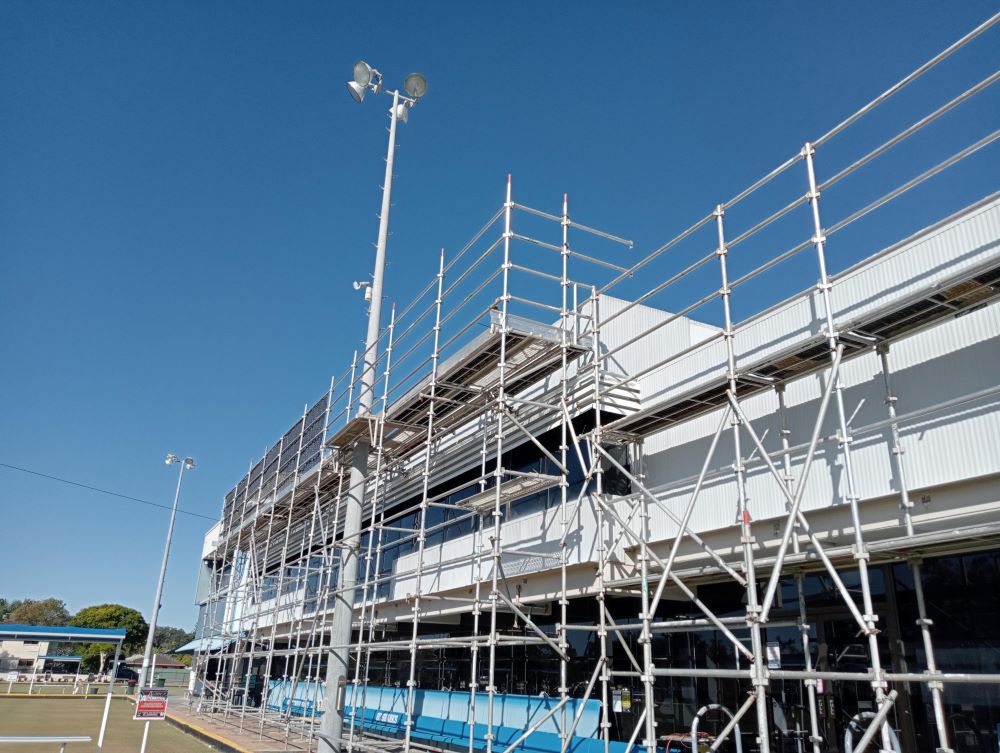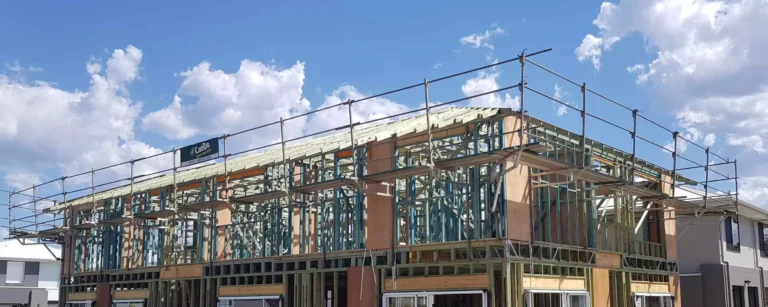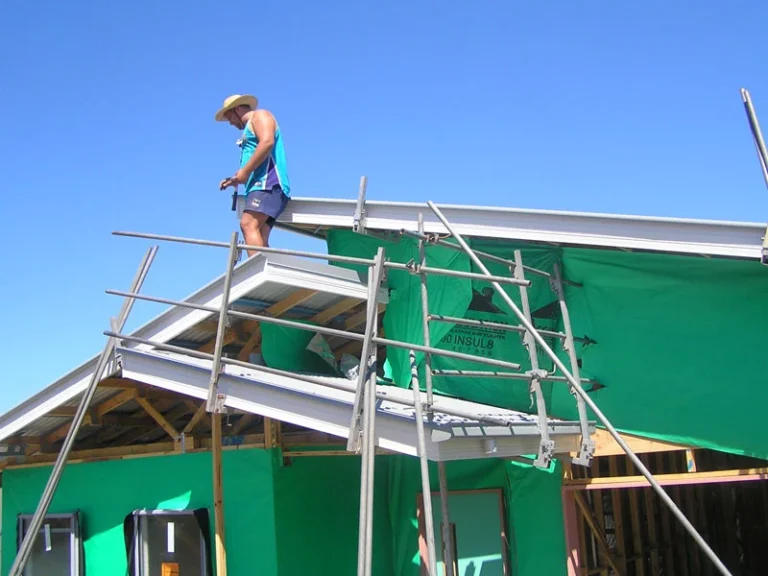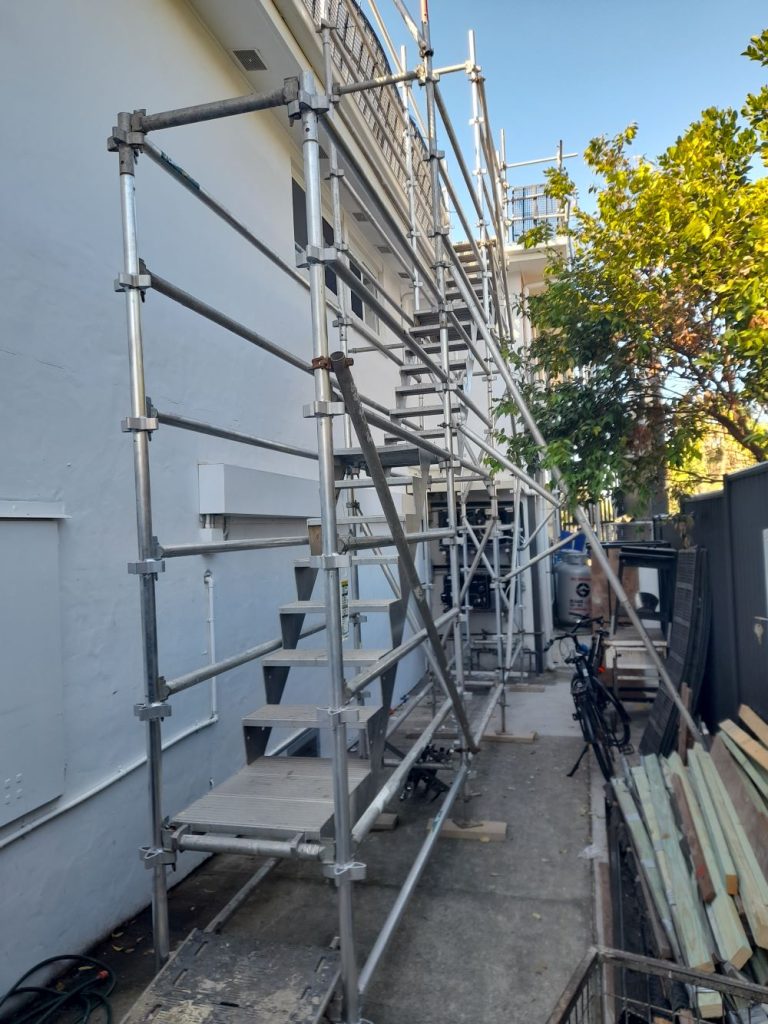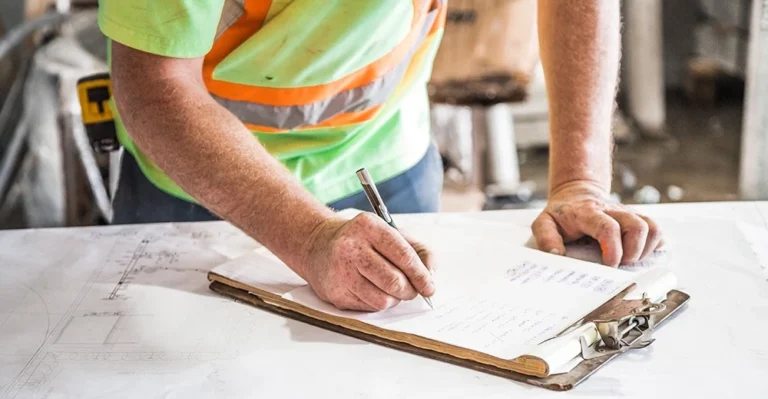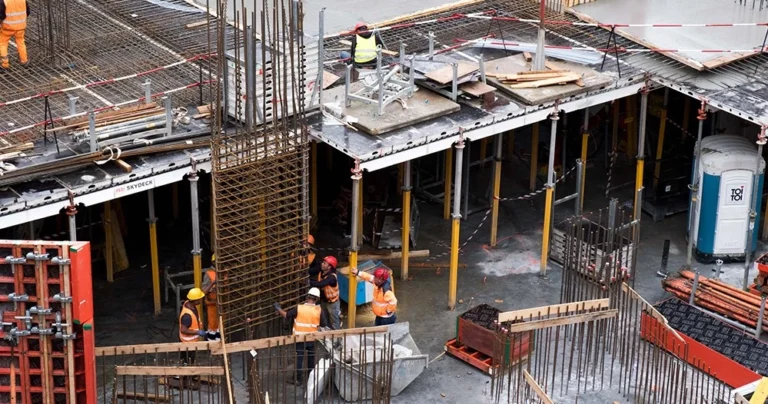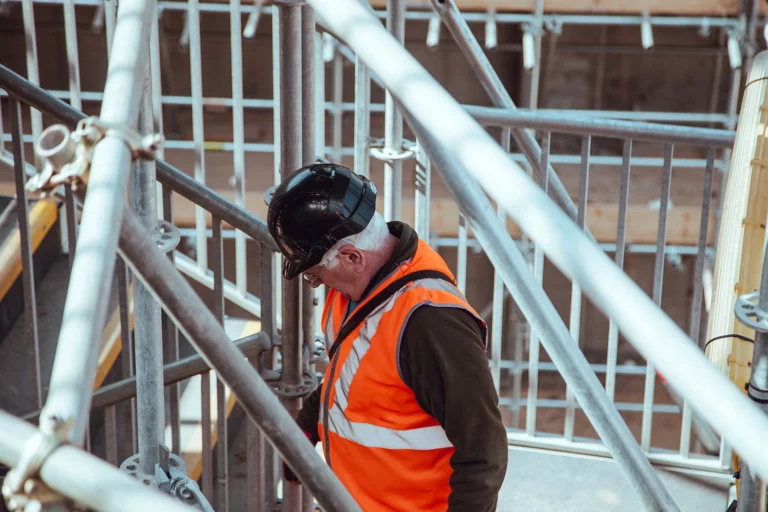Which Scaffold Do I Hire? Aluminium Or Steel?
Scaffold Materials: Aluminium vs Steel
When it comes to selecting the right scaffold for your project, two popular options are aluminium scaffold and steel scaffold.
Each type has its own unique characteristics and benefits that make them suitable for different situations. Let’s explore an overview of both options.
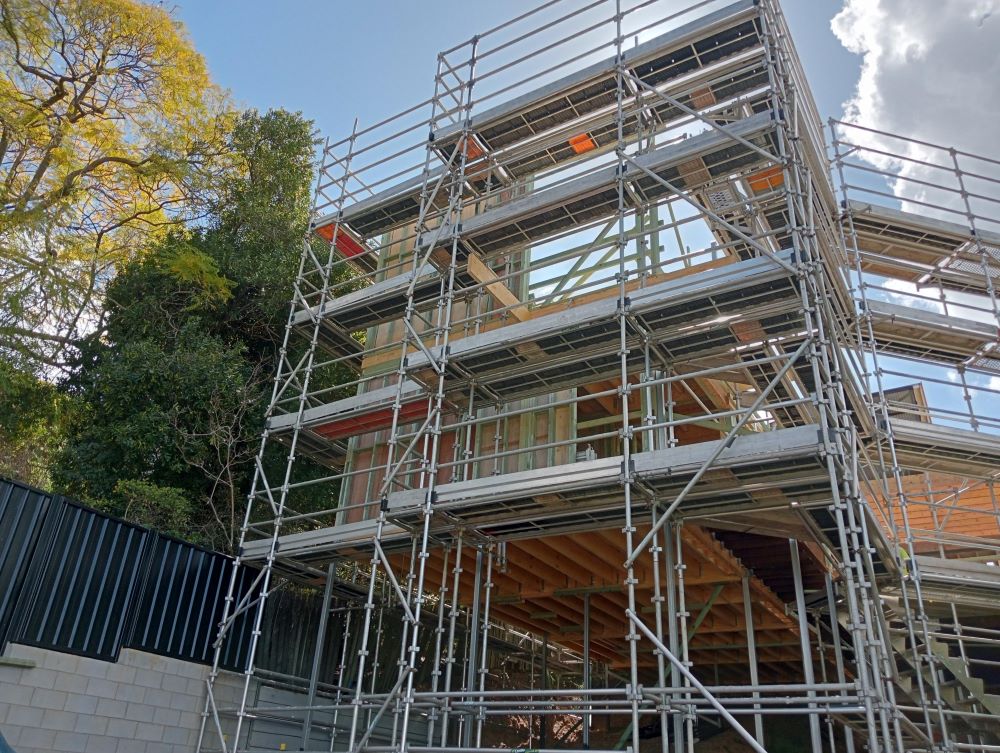
Overview of Aluminium Scaffold
Aluminium scaffold is known for its lightweight nature and ease of handling. It is a popular choice for projects that require frequent movement and quick assembly. Aluminium scaffold components are typically lighter than their steel counterparts, making them easier to transport and maneuver on-site.
In addition to being lightweight, aluminium scaffold is also corrosion-resistant. This makes it suitable for outdoor projects or areas with high humidity levels. The material’s resistance to corrosion helps to ensure the longevity and durability of the scaffold, even in challenging environmental conditions.
Assembly and disassembly of aluminium scaffold are typically quick and straightforward. The components are designed to fit together easily, allowing for efficient setup and dismantling. This can save valuable time on the job site, especially for projects with tight deadlines.
Overview of Steel Scaffold
Steel scaffold is known for its superior strength and load capacity. It is a robust and durable option that can support heavy loads and withstand harsh conditions. Steel scaffold components are typically stronger and more rigid than aluminium ones, making them suitable for projects that require greater stability and support.
Durability is a key advantage of steel scaffold, especially in extreme weather conditions or environments where the scaffold may be exposed to heavy use. Steel scaffold is less likely to bend or deform under pressure, offering a reliable and secure platform for workers.
Another advantage of steel scaffold is its longevity and cost-effectiveness. While the initial cost of steel scaffold may be higher compared to aluminium, its durability and long lifespan make it a cost-effective investment in the long run. Steel scaffold can withstand repeated use and requires less frequent replacement or repair.
When choosing between aluminium and steel scaffold, it is important to consider the specific requirements of your project. Factors such as the weight of the materials being worked with, the height and size of the scaffold required, and the environmental conditions of the job site should all be taken into account.
Consulting with your scaffold hire company can provide valuable guidance in selecting the most appropriate option for your project. For more information on when scaffold is required and the types of projects that may necessitate its use, visit our article on when to hire scaffolding.
Factors to Consider
When deciding between aluminium and steel scaffolds, several factors should be taken into consideration. Understanding the strength and durability, weight and portability, and cost and affordability of each scaffold material can help you make an informed decision.
Strength and Durability
Both aluminium and steel scaffolds are known for their strength and durability, but they differ in their specific qualities. Steel scaffolds are generally considered to have superior strength and load-bearing capacity compared to aluminium scaffolds. Steel is a robust material that can withstand heavy loads and provide stability even in demanding construction environments.
On the other hand, aluminium scaffolds are also strong and durable, but they may have limitations when it comes to supporting extremely heavy loads. Assessing the weight requirements of your project is crucial in determining which scaffold material is best suited for your needs.
Weight and Portability
When it comes to weight and portability, aluminium scaffolds have the upper hand. Aluminium is a lightweight material, making aluminium scaffolds easier to handle and transport compared to their steel counterparts and this is particularly beneficial for smaller-scale projects or situations where frequent scaffold repositioning is necessary.
Steel scaffolds, while heavier, are still portable but may require more effort and manpower for transportation. The weight and portability considerations should align with the specific requirements of your project to ensure efficient and safe scaffold usage.
Advantages of Aluminium Scaffold
When considering which scaffold material to choose, aluminium scaffold offers several distinct advantages that make it a popular choice for various construction and renovation projects.
Lightweight and Easy to Handle
One of the major advantages of aluminium scaffold is its lightweight nature. Compared to steel scaffold, aluminium scaffold is significantly lighter, making it easier to handle and transport. This lightweight characteristic allows for faster and more efficient assembly and disassembly, reducing the overall project timeline. Additionally, the ease of handling contributes to increased worker productivity and reduces the risk of fatigue-related accidents.
Corrosion Resistant
Aluminium scaffold exhibits excellent corrosion resistance properties. Unlike steel, which can rust and deteriorate over time, aluminium is naturally resistant to corrosion. This resistance is particularly beneficial in outdoor or high-moisture environments where the scaffold may be exposed to rain or humidity.
Quick Assembly and Disassembly
Another advantage of aluminium scaffold is its quick assembly and disassembly process. The lightweight nature of aluminium components, along with the use of user-friendly connectors and locking mechanisms, facilitates a faster setup. This feature is especially valuable when working on time-sensitive projects or when scaffolding needs to be moved frequently. The quick assembly and disassembly of aluminium scaffold not only saves time but also reduces labor costs.
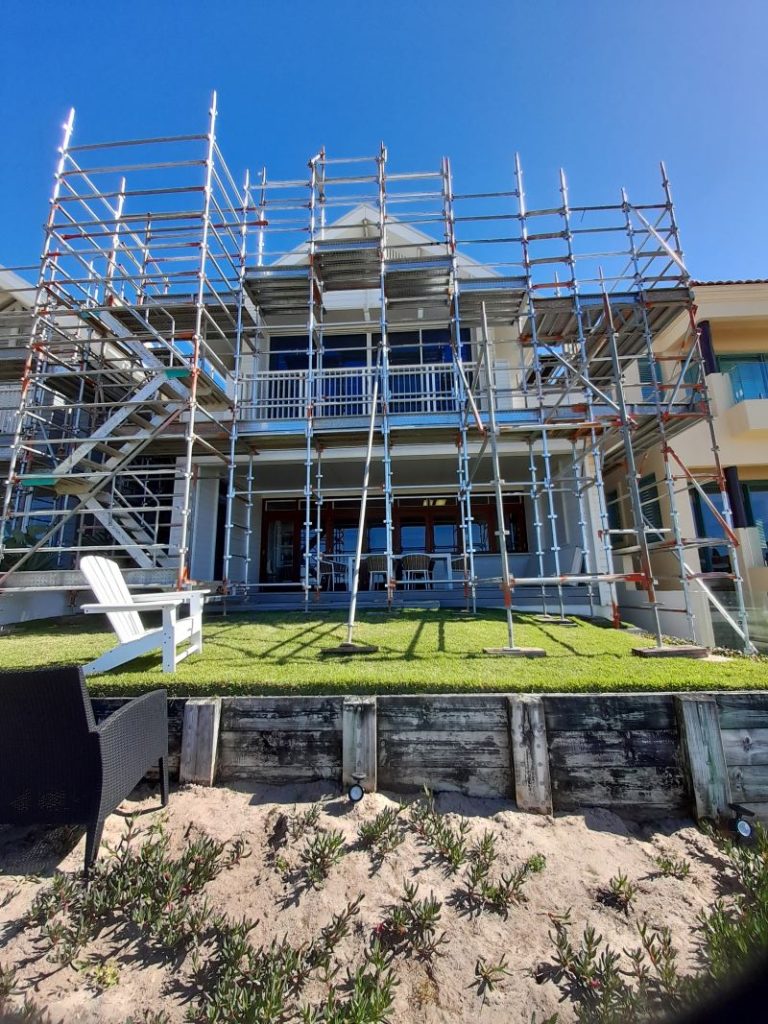
Advantages of Steel Scaffold
When it comes to choosing the right scaffold for your project, steel scaffold offers several advantages that make it a preferred choice for many construction and renovation projects.
Superior Strength and Load Capacity
One of the key advantages of steel scaffold is its superior strength and load capacity. Steel is known for its exceptional durability and ability to withstand heavy loads. This makes it an ideal choice for projects that require scaffolding to support significant weight, Steel scaffold systems are designed to provide a secure and stable platform for workers, ensuring their safety while working at elevated heights.
Durability in Extreme Conditions
Steel scaffold is highly resistant to various environmental factors, making it suitable for use in extreme conditions. It can withstand exposure to adverse weather conditions, such as high winds, heavy rain, and extreme temperatures. This durability ensures that the scaffold remains stable and secure, providing a safe working environment for construction and renovation projects. Whether it’s a gutter replacement project or any other work that requires scaffolding in challenging conditions, steel scaffold can withstand the demands.
Longevity and Cost-effectiveness
Steel scaffold is known for its longevity and cost-effectiveness. The durability of steel ensures that the scaffold can withstand multiple construction projects over an extended period. Unlike other materials, steel scaffold does not degrade easily, reducing the need for frequent replacements or repairs.
To determine the best scaffold material for your specific project, it’s important to assess your needs, consult with professionals, and consider safety and budgetary constraints.
Choosing the Right Scaffold for Your Project
When it comes to choosing the right scaffold for your project, careful consideration of your specific needs is essential. By assessing your project requirements, consulting with professionals, and considering safety and budgetary constraints, you can make an informed decision.
Assessing Your Project Needs
Start by evaluating the nature of your project and the specific tasks that require scaffold support. Consider factors such as the height and layout of the structure, the duration of the project, and any specialised requirements.
For example, scaffolding for an apartment block will have different specifications compared to scaffolding or guard rail for gutter replacement. By understanding your project needs, you can determine the type and configuration of scaffold that will best serve your purpose.
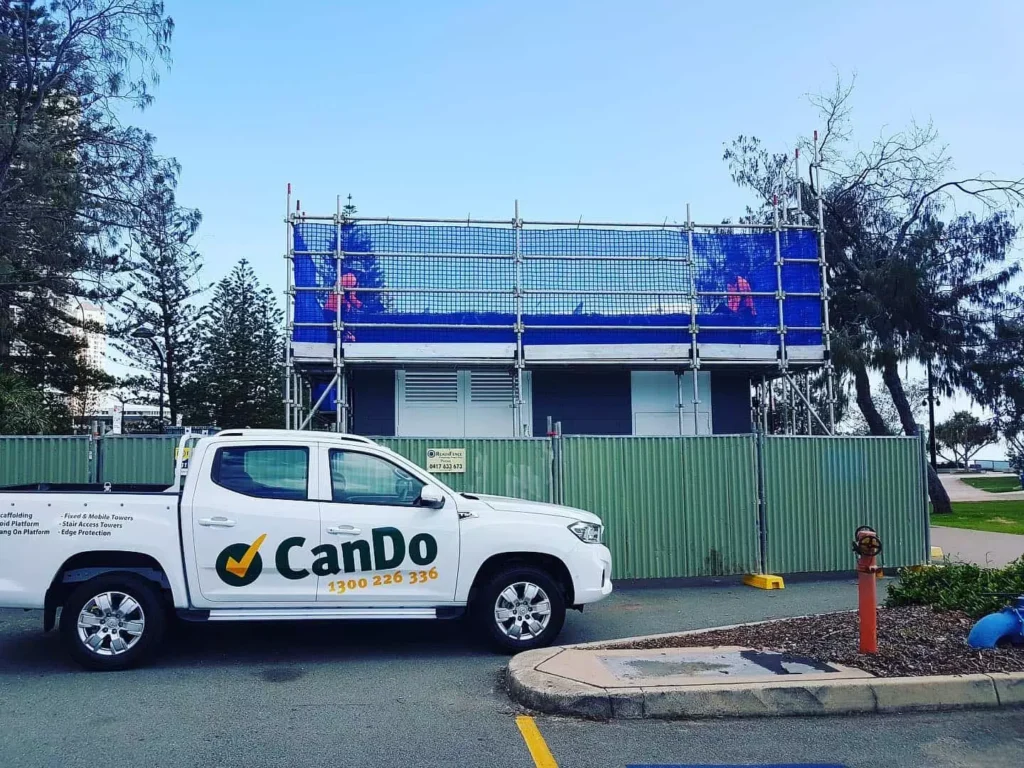
Consulting with Professionals
Consulting with experts such as Cando Scaffolding, is recommended when making decisions about scaffold hire. Our expertise will help you navigate the complexities of scaffold selection, ensuring that your project meets safety standards and regulatory requirements.
Get in touch with us today – Or request a quote and we can get you started in the right direction for the scaffold for your project.

